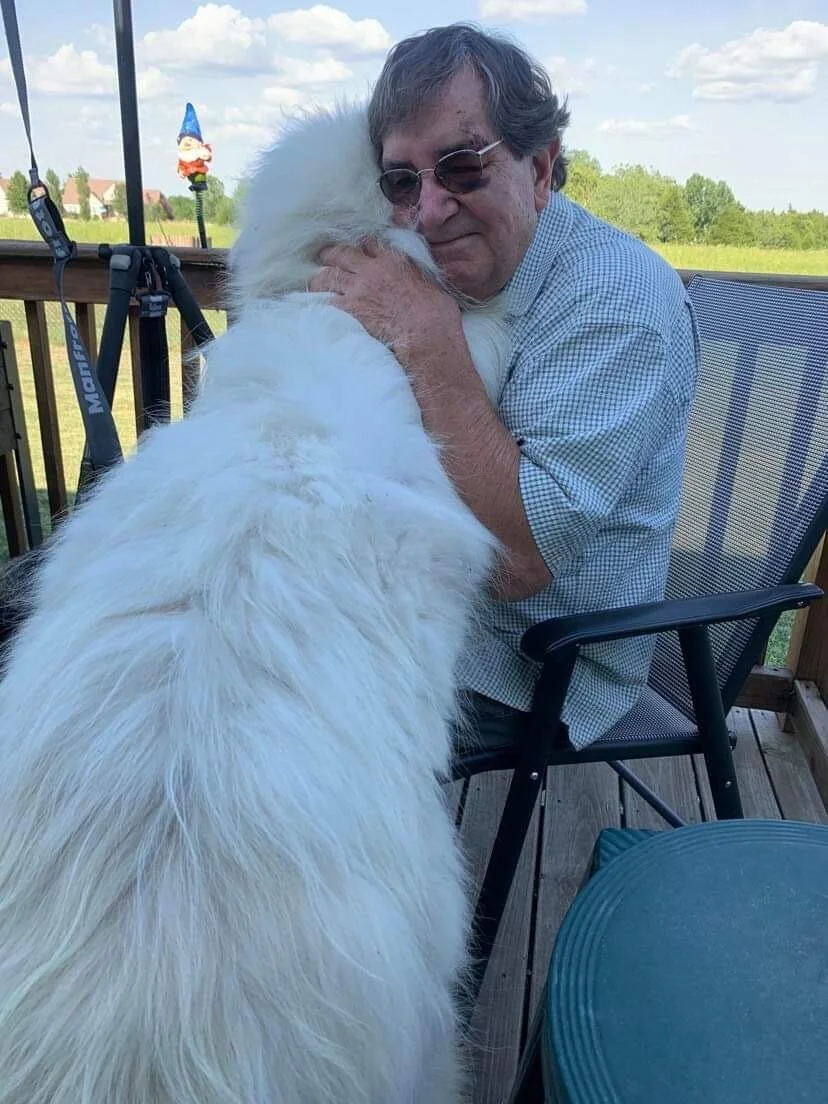Client Background
The client reached out regarding Butkus, a 2-year-old English Mastiff, who displayed obsessive and potentially predatory behavior toward a newly adopted kitten. Butkus, typically well-mannered and sweet, lived with his older Yorkie brother, Bentley, without issue until the kitten's arrival. The behavior included "staring down," fixation, and lack of responsiveness to his guardians' cues. The family, concerned for the kitten's safety, sought guidance on how to ensure both pets could coexist peacefully.
Initial Concerns
Butkus' fixation on the kitten created tension, raising concerns about high prey drive.
Safety for both pets was paramount, especially since the family was unsure how Mastiffs might behave around cats.
Separation added stress, as Butkus and the kitten vocalized when apart.
Holistic Behavior Intervention Plan
Step 1: Behavior Assessment & Context
The first consultation revealed the following key factors:
Butkus' Temperament: A gentle, food-motivated dog with no prior exposure to cats.
Environmental Setup: Shared spaces needed boundaries to minimize stress for all animals.
Human Anxiety: The guardians' concern for the kitten created heightened emotional energy in the home.
Step 2: Immediate Safety Measures
I recommended:
Physical Separation: Keep the kitten in a secure room when unsupervised, allowing Butkus to acclimate to the kitten’s scent through a door.
Scent Introduction: Encourage Butkus to sniff items associated with the kitten to begin building familiarity and positive associations.
Controlled Visual Introductions: Ensure all early interactions were managed on leash, reinforcing calm behavior.
Step 3: Gradual Exposure Process
Using my trauma-informed framework, we prioritized incremental exposure:
Positive Reinforcement for Calmness: Rewarded Butkus for showing calm interest in the kitten (e.g., sniffing, sitting, or lying down).
Brief Introductions: Held the kitten securely while allowing Butkus short, controlled interactions, redirecting fixation with high-value treats.
Consistent Cues: Established a clear hand signal ("sit") and sound cue (finger snap) to interrupt unwanted fixation.
Step 4: Addressing the Root Cause of Fixation
To address Butkus' behavior holistically:
Emotional Regulation Exercises: Introduced calming activities such as slow feeding from a snuffle mat and decompression walks.
Environmental Adjustments: Provided the kitten with escape routes, such as a cat tree, to create a sense of security.
Pack Dynamics: Encouraged Bentley's role as a natural pack leader to model appropriate behavior, as he barked when Butkus attempted to chase.
Outcome
Within 2 Months:
Butkus developed a calm, relaxed demeanor around the kitten.
Both pets now coexist peacefully, even when unsupervised.
Butkus displays affectionate, non-threatening behaviors, such as gentle licks and playful interactions.
The guardians report a harmonious household dynamic, with Bentley naturally reinforcing boundaries.
Key Takeaways
Holistic and Incremental Approach:
The slow, controlled introduction of the kitten allowed Butkus to process and adjust without feeling overwhelmed.Understanding Individual Motivations:
Leveraging Butkus' food motivation and Bentley’s leadership provided natural reinforcement mechanisms.Empowering Guardians:
With tools, techniques, and emotional support, the family fostered a positive bond between Butkus and the kitten.
Client Testimonial
"Roman’s approach helped us turn what felt like an impossible situation into a heartwarming success story. We’re thrilled to see Butkus and the kitten as best friends now. It’s all thanks to his patient, step-by-step guidance that gave us confidence to build trust and harmony in our home." - Rachel Simmonds
Interested in learning how to resolve your own multi-pet challenges?
Book a discovery video call here: https://holisticdogtraining.as.me/Short-Web.



















